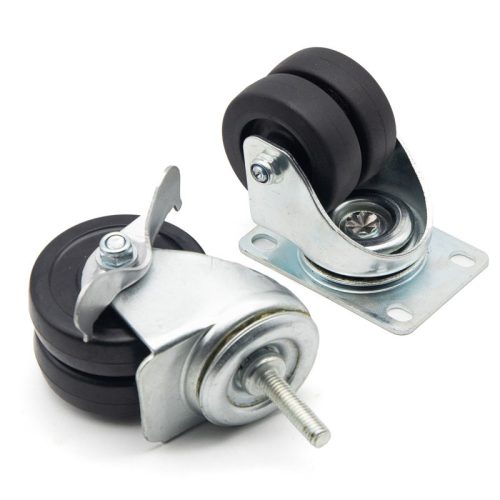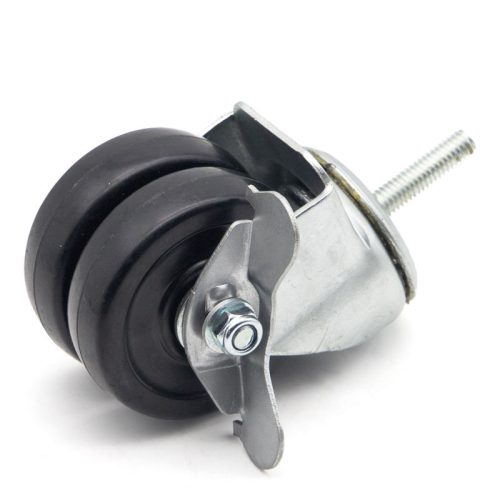Casters, those nifty little wheels attached to furniture, equipment, and industrial machinery, offer a convenient way to add mobility to your gear. But when you need the added benefit of stability, locking casters come to the rescue. In this comprehensive guide, we’ll walk you through everything you need to know to choose the right locking casters for your specific needs.
1. Understanding the Basics of Locking Casters
Locking casters are a specialized type of wheel designed to provide both mobility and stability. They accomplish this through a built-in locking mechanism, usually operated by a foot pedal or lever. When engaged, this mechanism prevents the caster from swiveling and rolling, effectively immobilizing your equipment. When disengaged, the caster functions like a regular swivel wheel, allowing you to move your equipment effortlessly.
2. Identifying Your Specific Needs
Before diving into the world of locking casters, it’s crucial to identify your specific requirements. Start by answering these questions:
- What type of equipment or furniture are you outfitting with locking casters?
- Where will the equipment be used? Is it for indoor or outdoor use?
- What is the total weight the casters need to support?
- Do you need the casters to have any special features, like non-marking wheels or corrosion resistance?
Understanding your unique needs will significantly impact your caster selection. For instance, heavy industrial machinery will require more robust casters than lightweight office furniture.
3. Types of Locking Casters
There are various types of locking casters available, and each has its own advantages:
- Total Lock Casters: These lock both the wheel and the swivel, offering the highest level of stability. Ideal for applications where immobility is essential.
- Swivel Lock Casters: These lock only the swivel, allowing the wheel to continue moving forward. They provide some control over direction while offering stability.
- Brake Casters: These come with a brake mechanism that can be activated to stop the caster from rolling, similar to a handbrake on a bicycle.
- Directional Lock Casters: These casters allow for both swiveling and rolling, but with controlled directional movement. Great for applications where you need to control the caster’s path.
4. Consider Floor Surfaces
The type of floor surface your equipment will be used on is another crucial factor in choosing the right locking casters. Some casters are better suited for certain surfaces, while others are more versatile. For example, hard rubber or polyurethane wheels are suitable for indoor use on smooth surfaces, while pneumatic wheels are better for outdoor use on rough terrain.
5. Weight Capacity
It’s vital to select locking casters that can support the weight of your equipment. Check the weight rating of the casters to ensure they can handle the load without compromising stability or safety.
6. Maintenance and Durability
Consider the durability of the locking casters, especially if they will be subjected to heavy use. Look for casters with quality materials and bearings to ensure they can withstand the demands of your application. Regular maintenance, such as cleaning and lubrication, can also extend the lifespan of your casters.
7. Installation
Lastly, make sure you’re equipped to install the locking casters correctly. This may involve drilling holes or attaching mounting plates, so having the right tools and expertise is essential.
In conclusion, choosing the right locking casters involves understanding the basics, identifying your specific needs, considering the types of locking casters available, assessing your floor surfaces, checking weight capacity, thinking about maintenance, and ensuring you can install them properly. By following these steps, you can confidently select locking casters that offer the perfect blend of mobility and stability for your equipment or furniture.
Remember that locking casters are a versatile and invaluable addition to many applications, providing the mobility you need with the stability you require.


